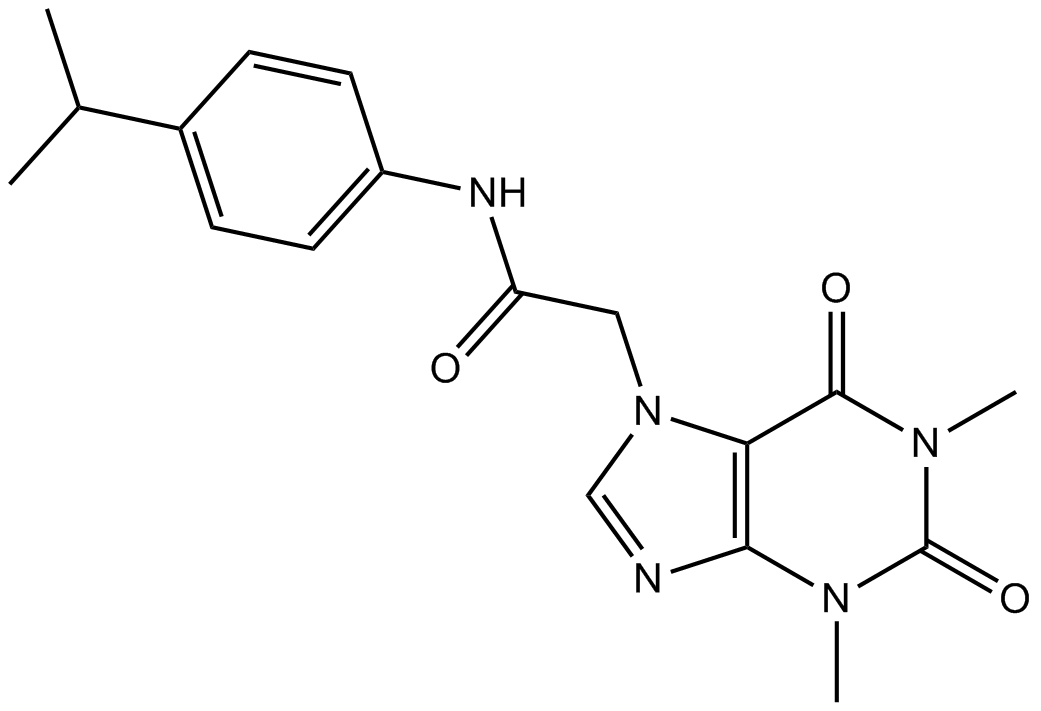HC-030031 |
| Catalog No.GC15947 |
TRPA1 channel blocker,potent and selective
Products are for research use only. Not for human use. We do not sell to patients.

Cas No.: 349085-38-7
Sample solution is provided at 25 µL, 10mM.
HC-030031 is a selective antagonist of transient receptor potential ankyrin subfamily, member 1(TRPA1) with IC50 value of 4.9μM [1].
TRP channels are found to take participate in the response of chemical stimuli and in mechanoreception. TRPA1 is the sole mammalian member of TRPA subfamily. As an inhibitor of TRPA1, HC-030031 can be used as a tool to study the role of this channel in pain perception. In the FLIPR calcium-influx assay, HC-030031 blocks cinnamaldehyde- and AITC- induced activation of TRPA1 with IC50 values of 4.9μM and 7.5μM, respectively. HC-030031 is selective against TRPA1. It shows no significant inhibitory activity against many other enzymes, receptors and transporters. It also has no effect on the activation of TRPV1, TRPV3 and TRPV4. In vivo, HC-030031 significantly reduces the hindpaw lifting induced by AITC as well as mechanical hypersensitivity induced by CFA in rats. Besides that, the administration of HC-030031(300mg/kg) can markedly attenuate the hypersensitivity (41%) induced by spinal nerve ligation [1].
References:
[1] Eid S R, Crown E D, Moore E L, et al. HC-030031, a TRPA1 selective antagonist, attenuates inflammatory-and neuropathy-induced mechanical hypersensitivity. Mol Pain, 2008, 4(48): 1-10.
Average Rating: 5 (Based on Reviews and 22 reference(s) in Google Scholar.)
GLPBIO products are for RESEARCH USE ONLY. Please make sure your review or question is research based.
Required fields are marked with *




